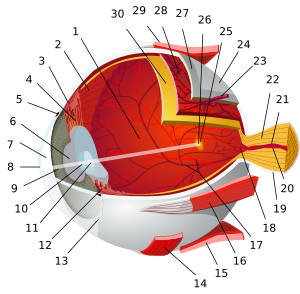Tuesday, June 22, 2010
Friday, June 18, 2010
Medicare Could Save $500 Million By Switching Drugs For AMD Treatment


After examining data on some 200,000 patients on Medicare, researchers found that expenditures for Avastin averaged about $42 per dose per eye, compared to $1,593 for a dose of Lucentis.
These study results have not yet been submitted to a medical journal for peer review, a fact that troubles Sen. Herb Kohl (D-WI), who chairs the Senate Committee on Aging. Kohl stated, "It is baffling that CMS would delay the release of this data when there are hundreds of millions of taxpayer dollars at stake.
High HbA1c in Black compared with White people may falsify diabetes testing
Black individuals with diabetes and prediabetes have previously been shown to have higher levels of HbA1c than their White counterparts. However, there are little available data on links between ethnicity and HbA1c in nondiabetic individuals.
To investigate further, David Ziemer (Emory University, Atlanta, Georgia, USA) and colleagues recruited 1581 and 1967 non-Hispanic Black and White individuals without known diabetes from the SIGT (Screening for Impaired Glucose Tolerance) study and the NHANES III (Third National Health and Nutrition Examination) survey, respectively.
As reported in the Annals of Internal Medicine, the team found that HbA1c levels were 0.13% and 0.21% higher in Black than White participants with normal glucose tolerance (fasting plasma glucose [FPG] below 100 mg/dl) in the SIGT and NHANES III groups, respectively.
To investigate further, David Ziemer (Emory University, Atlanta, Georgia, USA) and colleagues recruited 1581 and 1967 non-Hispanic Black and White individuals without known diabetes from the SIGT (Screening for Impaired Glucose Tolerance) study and the NHANES III (Third National Health and Nutrition Examination) survey, respectively.
As reported in the Annals of Internal Medicine, the team found that HbA1c levels were 0.13% and 0.21% higher in Black than White participants with normal glucose tolerance (fasting plasma glucose [FPG] below 100 mg/dl) in the SIGT and NHANES III groups, respectively.
Tuesday, June 15, 2010
Role of Diet & Medications in Cataract Development
Two studies published in the June issue of the Archives of Ophthalmology, healthy diet helps guard against cataracts, while certain medications raise the risks of this common cause of vision loss.
In the first study, involving 1,808 middle-aged and elderly women, researchers found that those who eat foods that contain high levels of a variety of vitamins and minerals may be less likely to develop nuclear cataract.
A second study found that medications that increase sensitivity to the sun -- including antidepressants, diuretics, antibiotics, and the pain reliever naproxen sodium (commonly sold over-the-counter as Aleve) -- increase the risk of age-related cataract.
Higher prevalence of cataracts in women was also associated with other modifiable factors, such as smoking and obesity, and with nonmodifiable factors, such as brown eyes, myopia, and high pulse pressure, MedPage Today reported. Still, diet was the strongest risk factor related to reduced risk of nuclear cataract in this sample of postmenopausal women, the study authors noted, adding, "Lifestyle improvements that include healthy diets, smoking cessation, and avoiding obesity may substantively lower the need for and economic burden of cataract surgery in aging American women".
In the first study, involving 1,808 middle-aged and elderly women, researchers found that those who eat foods that contain high levels of a variety of vitamins and minerals may be less likely to develop nuclear cataract.
A second study found that medications that increase sensitivity to the sun -- including antidepressants, diuretics, antibiotics, and the pain reliever naproxen sodium (commonly sold over-the-counter as Aleve) -- increase the risk of age-related cataract.
Higher prevalence of cataracts in women was also associated with other modifiable factors, such as smoking and obesity, and with nonmodifiable factors, such as brown eyes, myopia, and high pulse pressure, MedPage Today reported. Still, diet was the strongest risk factor related to reduced risk of nuclear cataract in this sample of postmenopausal women, the study authors noted, adding, "Lifestyle improvements that include healthy diets, smoking cessation, and avoiding obesity may substantively lower the need for and economic burden of cataract surgery in aging American women".
Friday, June 11, 2010
Eye Exam May Spot Multiple Sclerosis
 Image via Wikipedia
Image via Wikipedia
This technique has the potential to provide a powerful and reliable assessment strategy to measure structural changes in the central nervous system," study co-senior author Dr. Elliot Frohman, professor of neurology and ophthalmology and director of the Multiple Sclerosis Clinical Center at UT Southwestern, said in a medical center news release.
The study appears in the June issue of the journal Annals of Neurology. The research was a joint project with the University of Pennsylvania School of Medicine, John Hopkins University School of Medicine, and the University of Alabama at Birmingham
Avastin "Superior To Standard Care" For Treating Wet AMD, Researchers Say
A cheap drug used to treat bowel cancer should also be prescribed to patients with a condition that leads to sight loss, say UK researchers. Researchers at three eye centres in London, Bristol and Cheltenham carried out a pilot study in 131 patients with wet AMD.
The drug firm, Roche, which markets Avastin, has not applied for the drug to be used for wet AMD.
Barbara McLaughlan, RNIB campaigns manager for eye health and social care, said patients should continue to be treated with Lucentis until "robust evidence" was available on the safety and effectiveness of Avastin.
The drug firm, Roche, which markets Avastin, has not applied for the drug to be used for wet AMD.
Barbara McLaughlan, RNIB campaigns manager for eye health and social care, said patients should continue to be treated with Lucentis until "robust evidence" was available on the safety and effectiveness of Avastin.
Friday, June 04, 2010
 Image via Wikipedia
Image via Wikipedia
Their method, published recently in Journal of Neuroscience Methods, offers a potential new source of cells for retinal transplants. Specifically, the scientists created two types of cells from the human embryonic stem cells: early-stage retinal cells, and retinal pigment epithelium cells, which provide nourishment to the cells responsible for vision in the retina.
Robert Lanza, chief scientific officer at Advanced Cell Technologies, who was not involved in the study, says that his team discovered several years ago that, when turning human embryonic stem cells into RPE cells, other stem cells would spontaneously form layers, including patches of photoreceptors.
 11:09 AM
11:09 AM
 Keshav Bhat
Keshav Bhat






![Reblog this post [with Zemanta]](http://img.zemanta.com/reblog_e.png?x-id=2663f600-5338-4347-a3e2-a927400f4d36)



